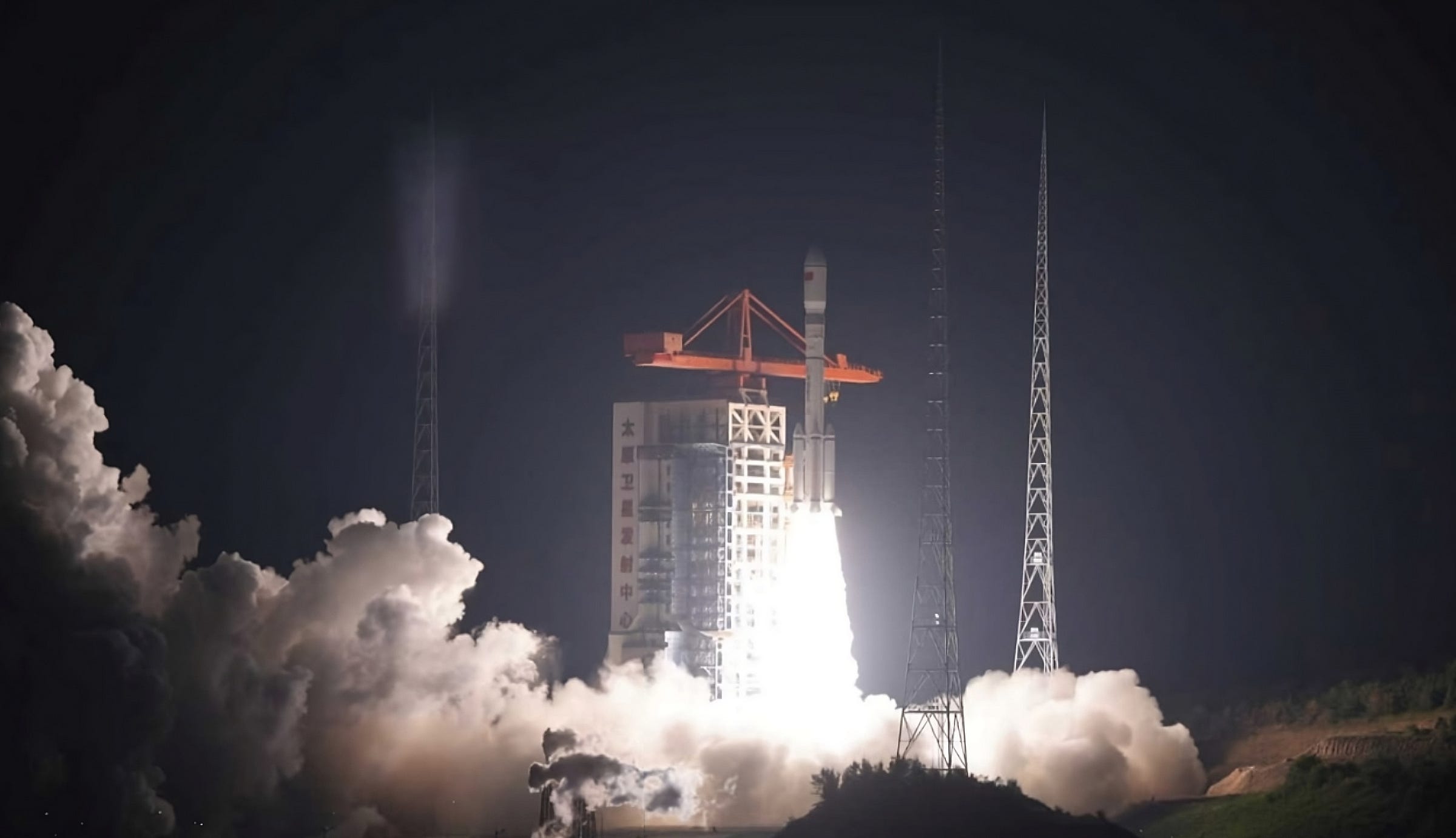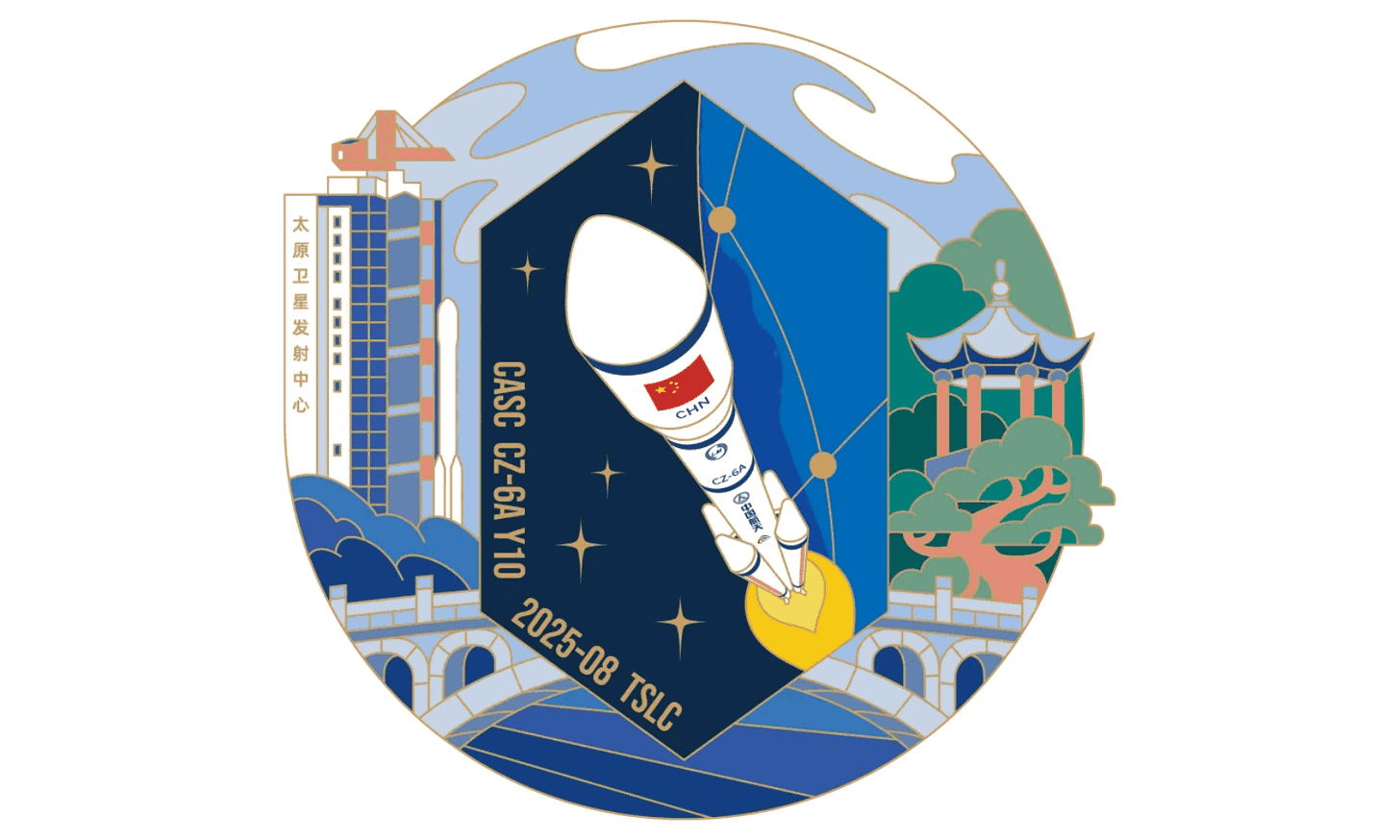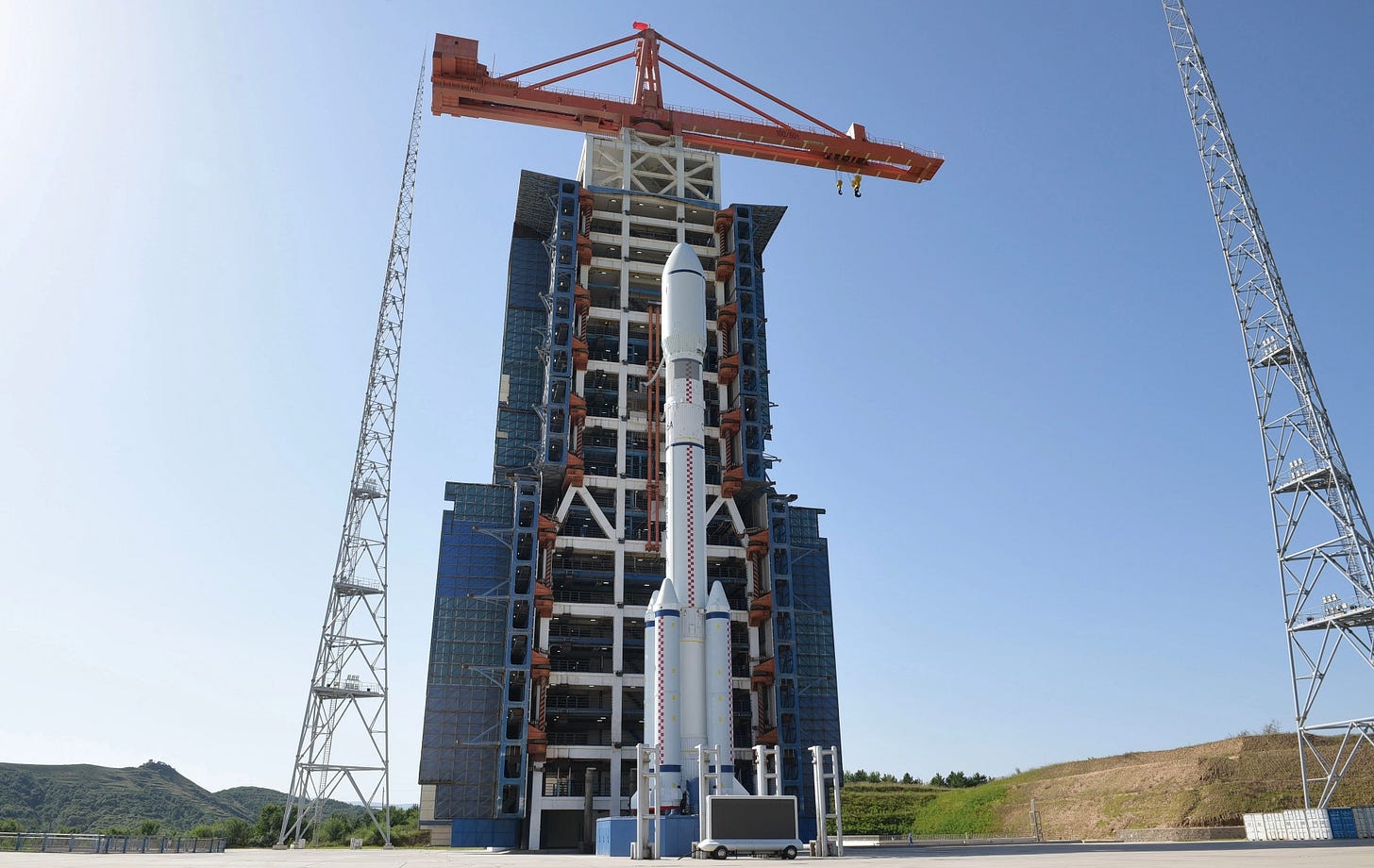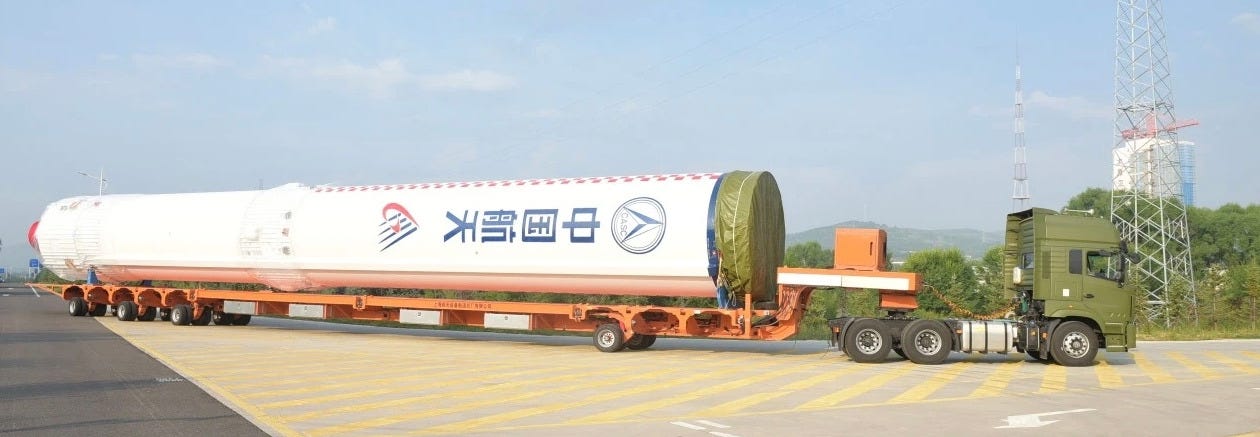Taiyuan Launch Expands GuoWang Constellation [Long March 6A Y10]
Another five satellites were sent into space.
A Long March 6A blasted off from Launch Complex 9A at the Taiyuan Satellite Launch Center at 22:15 pm China Standard Time (14:15 Universal Coordinated Time) on August 17th, heading for a near-polar orbit with another group of internet satellites.
Atop of the Long March 6A was the ninth batch of GuoWang (国网) mega-constellation satellites, of which another five spacecraft are believed1 to have been onboard. The Innovation Academy for Microsatellites, Chinese Academy of Sciences (中国科学院微小卫星创新研究院) contributed to the satellites onboard.
The GuoWang constellation is operated by China Satellite Network Group, a state-owned enterprise, and wholly backed by the Chinese government. By the 2030s, up to 13,000 satellites could be in orbit, providing worldwide internet services; however, China-focused services will be the immediate priority.
Two different satellite variants are believed to be in use for the constellation, a larger version used on vehicles like the Long March 5B, while smaller ones are used when launched atop rockets such as the Long March 8A or Long March 12. An electric propulsion system is likely in use due to a planned operational orbit above 1000 kilometers in altitude, as it would be the most efficient means of propulsion to deorbit each spacecraft once they reach the end of their operational lives after several years.
GuoWang is steadily catching up, now with 72 satellites in space, with the Qianfan (千帆) mega-constellation, also set to provide space-based internet services, with its 90 satellites in orbit. This has been enabled by the lack of deployment of Qianfan satellites, which is believed to be on hold to troubleshoot some satellite issues.
As the Long March 6A ramps up into high-frequency operations, today's launch was the sixth this year, teams further optimized test procedures and personnel protocols to support the increased frequency, according to the Shanghai Academy of Spaceflight Technology. Emphasis was placed on weather preparations for Taiyuan’s summer season, which could see unexpected lightning, to ensure a reliable launch.
Today’s launch was the 15th mission for the Long March 6A, the 243rd Long March vehicle launch from the Shanghai Academy of Spaceflight Technology, and the 590th launch of the Long March launch vehicle series. This was also the 48th launch from China in 2025.
Liftoff video via 央视新闻 on Weibo.
Check out the previous Long March 6A launch
GuoWang From Green Hills [Long March 6A Y14]
Blasting off from the Launch Complex 9A at a vividly green Taiyuan Satellite Launch Center at 18:03 pm China Standard Time (10:03 Universal Coordinated Time), a Long March 6A flew into a polar orbit carrying a group of satellites.
What is the Long March 6A?
This section is for those less familiar with China's Long March series of launch vehicles.
The Long March 6A is the first new-generation launch vehicle in China to utilize a combination of solid and liquid propellants. This vehicle was developed by the Shanghai Academy of Spaceflight Technology and utilizes a two-and-a-half-stage design, the boosters burn an unspecified solid propellant with the first and second stages burning rocket-grade kerosene and liquid oxygen.
The payload capacity of the launch vehicle is currently as follows:
8,000 kilograms to low Earth orbit
4,500 kilograms to a 700-kilometer sun-synchronous orbit
The first-stage is powered by two YF-100 engines, generating a combined thrust of approximately 244 tons using rocket-grade kerosene and liquid oxygen. The first-stage is augmented by four solid rocket boosters, each producing 124 tons of thrust from an unspecified solid propellant, resulting in a combined booster thrust of 492 tons. Together, the first-stage and boosters generate a total thrust of 736 tons. The second stage is powered by a single YF-115 engine, producing 18 tons of thrust using also burning rocket-grade kerosene and liquid oxygen.
On the launchpad, the Long March 6A is believed to be up to 52 meters tall, a handful of fairings are available, and weighs 530,000 kilograms when fully fuelled. The first and second stages of the vehicle have a diameter of 3.35 meters while the solid-fuelled boosters have a diameter of 2 meters, the fairing has a diameter of 4.2 meters.
So far, every Long March 6A has launched from the Taiyuan Satellite Launch Center, in the north of Shanxi province.
The Innovation Academy for Microsatellites, Chinese Academy of Sciences says this launch brings them to 190 spacecraft launched. Their previous mission, also on August 17th, brought them to 185.





![GuoWang From Green Hills [Long March 6A Y14]](https://substackcdn.com/image/fetch/$s_!bWTV!,w_1300,h_650,c_fill,f_auto,q_auto:good,fl_progressive:steep,g_auto/https%3A%2F%2Fsubstack-post-media.s3.amazonaws.com%2Fpublic%2Fimages%2F269fad11-a84e-4a97-b07c-d982c13f69fa_4096x2184.jpeg)

